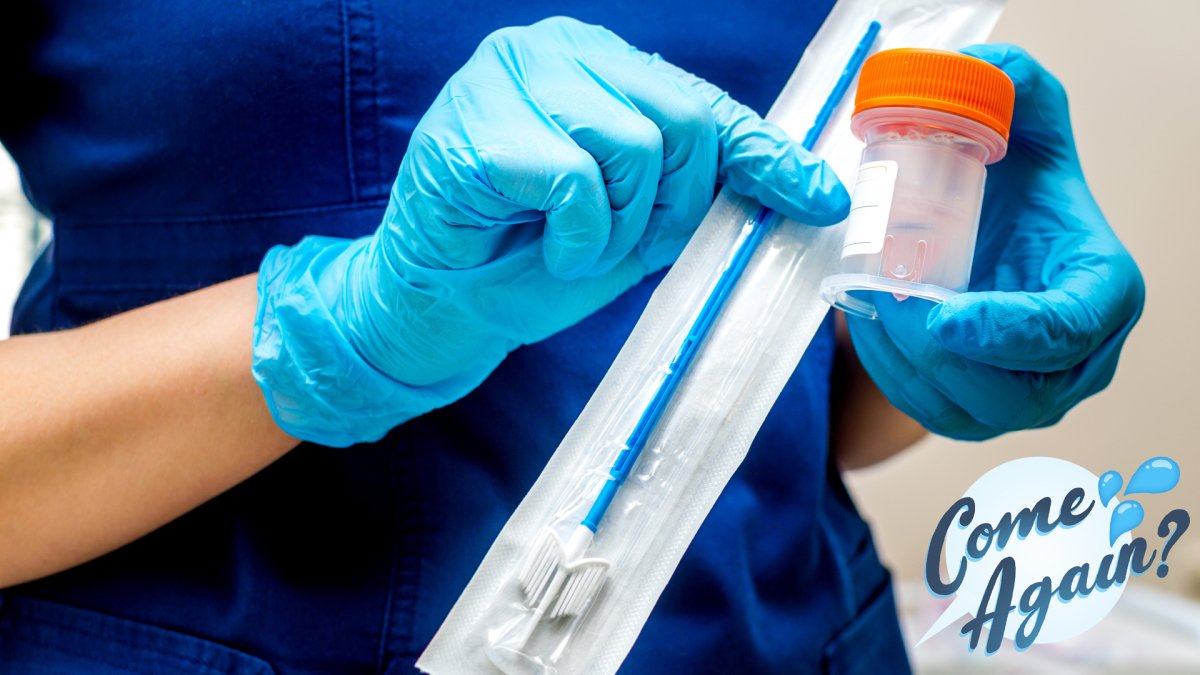
My heart sunk when I read the letter. I had tested positive for HPV and my smear test result was “inadequate”. I could almost hear my pulse thudding in my chest. I had no idea what this result meant or whether I should be worried about it.
I’d never heard the word “inadequate” used in relation to a cervical screening (also known as a Pap smear) before now. This word, coupled with the positive HPV result, understandably prompted me to freak out. It was 11 p.m., so when I tried to ring my mum — my first port of call for all my reproductive health questions — she was already asleep. I googled the words “inadequate smear result,” but struggled to find any information I could trust.
If you’ve also received an inadequate smear test result, we consulted experts to get you the answers you need to put your mind at ease.
What is HPV?
An abbreviation of Human Papilloma Virus, HPV is a group of very common viruses. Around 80 percent of sexually active people will get HPV at some point in their lifetime, but most will be unaware they have it due to the condition’s lack of symptoms. Per the UK’s National Health Service (NHS), HPV viruses “do not cause any problems in most people, but some types can cause genital warts or cancer.” Only high risk strains of HPV cause cell changes which can, in some cases, eventually lead to cervical cancer if left untreated. This is why it’s really important to get regular pap smear tests.
Inadequate = unreadable
If you’re reading this article in frantic search of answers, do not be alarmed. Take a few deep breaths: it is not an abnormal smear result (abnormal would indicate that there are changes in cervical cells which we’ll go into more detail below), it simply means it was unreadable. An inadequate cervical smear test result simply means that the swab sample did not contain enough cells to provide an accurate result. You’ll need to repeat the smear test, usually in three months’ time, to give the surface of your cervix enough time to regenerate enough cells.
Eluned Hughes, head of information and engagement at charity Jo’s Cervical Cancer Trust, understands the worry that receiving an inadequate result can cause.
“Being told you have an ‘inadequate’ cervical screening result can be scary, and understandably so,” Hughes tells Mashable. “However, all ‘inadequate’ really means is that the sample (the cervical cells your GP or nurse collected) either couldn’t be tested properly, isn’t made up of enough cells to test, or can’t be seen accurately under a microscope.”
“At this point, your GP will get in touch and ask you to go back for another cervical screening in three months. An inadequate test can be frustrating and inconvenient, but remember, it’s no cause for concern,” Hughes added.
In my case, I went back to my doctor’s surgery three months later to get a repeat smear test. It was nerve-wracking (to say the least), but I wanted to be sure that there were no cell changes. My results came back showing no abnormal cells.
An inadequate test can be frustrating and inconvenient, but remember, it’s no cause for concern.
In England, Scotland, and Wales, smear tests have changed in recent years — they now use a test called HPV primary screening during cervical screening. Northern Ireland currently uses a test called cytology, which examines cells, but will move to HPV screening in the future. The U.S. does not pre-screen for HPV during a Pap smear, and instead tests for cell abnormalities.
During an HPV primary screening, the laboratory will pre-screen to see if you have high risk HPV. If your sample is positive for HPV, they’ll test for abnormal cells. (You won’t need to repeat your smear test, they’ll test the same swab they used to test for HPV.)
“High risk HPV can cause cell changes in the cervix, which over time can develop into cancer, according to independent research organisation and charity Cancer Research.
If you test positive for HPV, you’ll receive one of the following results:
1. HPV found with no cell changes
You’ll be asked to return in a year’s time for another screening to see if you still have HPV. If you test positive for HPV three years in a row, you’ll be invited to a colposcopy — a test to take a closer look at your cervix. The microscope stays outside of your body. A small sample of cells (known as a biopsy) might be taken to be tested.
2. HPV found with cell changes
You’ll be invited to return as soon as possible a colposcopy.
3. HPV found with inadequate cell results
You’ll be invited to take another smear test in three months’ time to gain a better sample to check for any cell changes.
What if I have cell changes?
There are different grades of cell changes — and some do not require any immediate treatment. If you are informed that your cell changes are high risk — they’re called CIN3 or CGIN — you will be offered treatment to have those cells removed. CIN stands for cervical intra-epithelial neoplasia and CGIN stands for cervical glandular intra-epithelial neoplasia.
If your cell changes are classed as CIN1 then no immediate treatment is required as these cell changes are considered low risk. CIN2 cells are considered medium risk and you’ll be offered a colposcopy to check the cells and potentially remove them.
What happens after an inadequate smear?
If the laboratory was able to get a clear reading second time around, then you’ll be informed as to whether you have any cell changes or not. If your follow-up smear also comes back inadequate, you might be invited for a colposcopy to get a more detailed examination of the cervix.
As I’d had a positive HPV result, I was called back a year later for another smear test. I just got the results back and I received a negative HPV result, meaning my immune system had cleared the virus from my system.
My letter from the NHS Cervical Screening Administration Service read as follows: “Your result is HPV negative. This means your risk of cervical cancer is very low and there is no need to check for abnormal cells even if you had these in the past.” My next smear test will now be in three years’ time in 2025.
If you’re feeling anxious about getting a smear, talk to a healthcare professional about any concerns you have as they will hopefully be able to allay those fears and reassure you. Knowledge is power, after all, so book your smear test when you’re invited to do so.












